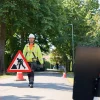Court Ruling Brings Clarity to UK Telecoms Disputes Over Rents and Wayleaves

The UK Supreme Court has today handed down three judgements related to the contentious issue of land ownership and rent reductions on mobile masts, such as those that may occur when mobile and fixed wireless broadband operators (EE, Three UK, O2 and Vodafone etc.) attempt to upgrade an existing site.
Just to recap. The Government last revised the Electronic Communications Code (ECC) in 2017, not least by making it both easier and cheaper for telecoms operators (broadband and mobile) to access public or private land in order to build new networks (here). This was a necessary change, but they arguably didn’t do enough work on the detail of its implementation.
The new legislation ended up triggering various disputes after telecoms operators began offering significantly lower rents for such sites – sometimes reducing rents worth thousands of pounds to just a few tens of pounds (here and here). In response, landowners became more likely to raise disputes over both new and existing wayleave (legal access) agreements. In some cases, this was starting to obstruct the ability of operators to expand their coverage and upgrade existing sites.
Advertisement
On the flip side, land and property owners faced complex considerations, such as the need to facilitate access and the inability to repurpose such sites for other more lucrative ventures once deployed. Likewise, where rooftop sites on buildings are concerned, there can be issues of mobile kit impacting insurance, proximity of base stations to residents (safety), and the fact that the property owner has to keep the area repaired (potentially becoming liable if they fail to do so). A small annual payment may not be enough to cover such issues.
Supreme Court’s Judgement
Some of these disputes recently reached the Supreme Court, which was largely focused on the question of who occupies the land upon which an operator’s kit (ECA) is presently installed. The main issue was whether and how an operator who has already installed ECA on a site can acquire new or better code rights from the site owner, which is relevant to the above issues and disputes over new (lower) rents etc.
The Court of Appeal (CoA) previously concluded that when an operator has already installed ECA on land, it will often be both the “operator” and “occupier of the land” for the purposes of the new ECC code (Paragraph 9). As an operator cannot enter into an agreement with itself, the CoA concluded that in those circumstances, an operator is precluded from applying for new code rights.
However, the CoA’s decision had big implications for the many thousands of agreements which were already in place between operators and site owners at the time the new code came into effect, which meant that operators couldn’t apply for new code rights to improve the security of their position on the land.
Advertisement
In the new ruling, the Supreme Court largely accepted the network operators’ side of the arguments, and noted that the purpose of the government’s ECC changes would be impeded if operators could not apply for the new rights they need for their network simply because their ECA is already installed on the site. But for various reasons this did NOT result in all the appeals being allowed.
Outcome of the Appeals
Although the Supreme Court therefore largely accepts the operators’ arguments this does not result in all the appeals being allowed. The Compton Beauchamp appeal is dismissed because it was Vodafone which was in occupation of the site, not the site owner Compton Beauchamp to which Cornerstone as operator had applied for the rights.
The Supreme Court does not hold that all occupation of any operator with ECA installed on the site falls to be disregarded. It is only the occupation of the operator who seeks to have a new code right conferred on it which is disregarded. The On Tower appeal is allowed because On Tower’s occupation of the land by virtue of its ECA being installed falls to be disregarded and there is therefore no barrier to a code agreement being imposed under Paragraph 20.
As regards the Ashloch appeal, the distinctive feature in this appeal concerns the fact that the tenancy initially conferring code rights under the old code was protected by Part 2 of the Landlord and Tenant Act 1954. This gives security of tenure to business tenants and permits the tenant to apply to the court to renew the lease when its initial term expires.
The Supreme Court agrees with the Upper Tribunal and Court of Appeal that the transitional provisions mean that an operator with a subsisting agreement protected under the 1954 Act does not have the option of renewing the rights under the new code. An operator in this position must instead exercise its rights under Part 2 of the 1954 Act. It is not apparent from the description of the background facts … whether the application made by Cornerstone covered new rights or rather sought to renew the rights that can only be renewed under the 1954 Act. The Supreme Court therefore invites submissions from the parties as to whether the appeal should be remitted to the Upper Tribunal to consider this.
The judgements should at least bring some clarity to both sides of the debate on how the new Code should actually work, although there’s no escaping the fact that it has now been a long (i.e. 5 years since the code was introduced!) and very expensive battle to reach this point.
We’d tend to agree with Emma Humphreys, Partner at Charles Russell Speechlys, who said today: “At the end of the day, both operators and landowners are paying the price for hastily passed legislation which put them on an inevitable path towards disputes rather than collaboration. More importantly, it is the public who are paying the price through continuing inadequate mobile and broadband coverage.”
The Government are currently debating a further series of ECC tweaks under the new Product Security and Telecommunications Infrastructure Bill (here). The bill aims to introduce a new way of resolving disputes that does not involve going to court, and new automatic rights for operators to upgrade and share underground infrastructure.
Advertisement
In addition, the new legislation will attempt to speed-up negations for renewal of existing access agreements and enable operators to apply for time-limited access to certain types of land more quickly where a landowner does not respond.
Mark is a professional technology writer, IT consultant and computer engineer from Dorset (England), he also founded ISPreview in 1999 and enjoys analysing the latest telecoms and broadband developments. Find me on X (Twitter), Mastodon, Facebook, BlueSky, Threads.net and Linkedin.
« Netomnia Adds Tewkesbury to UK FTTP Broadband Rollout
Gov Pressures UK ISPs and Mobile Operators on Cost of Living »






















































Comments are closed